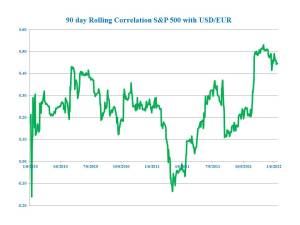MLPs And The Growth Of Natural Gas Infrastructure
We often write about companies involved in drilling for shale gas in the U.S. Their drilling success has depressed natural gas prices with little near term prospect of a bounce, and consequently we’ve focused on companies with low debt and cheap operating costs. Range Resources (RRC) Southwestern Energy (SWN), Devon Energy (DVN) and Comstock Resources (CRK) are all holdings of ours in this sector.
In the years ahead it seems clear that the growing use of natural gas will require significant investment in infrastructure to transport, refine and distribute what the E&P names above and others extract from the ground. Master Limited Partnerships (MLPs) offer an interesting opportunity to invest in this growth. A great deal of the midstream energy infrastructure currently employed is owned through MLPs. Since they are structured as pass-through entities they are not subject to corporate income tax. The public unitholders are partners owning a proportional share of the assets, and therefore receive K-1s rather than 1099s. This additional tax reporting complexity dissuades many investors from owning MLPs, but their cheaper cost of capital (since they don’t pay corporate income tax) and the tax-deferred nature of most of their distributions make them compelling for most U.S. taxable high net worth investors.
Building the additional infrastructure to process growing volumes of natural gas will over the next ten years result in a bigger MLP industry. JPMorgan recently forecast (using estimates from the Interstate Natural Gas Association of America, INGAA) that today’s $250BN market cap MLP sector will require an additional $130BN in new capital to fund new natural gas and oil transmission lines, gathering lines and storage facilities.
Plains All American (PAA) is one of the larger MLPs with a market valuation of $12BN and a well regarded management team. In their 2011 10K PAA outlines the growth they expect to see in U.S. oil business and their position as a major owner of energy infrastructure places them in a good spot for natural gas as well. Cheap ethane, often used as a feedstock in the petrochemical industry, is expected to continue attracting investment in the U.S. Some analysts expect Natural Gas Liquids (NGL) supply (including ethane) to increase by as much as 40% by 2016. PAA’s ownership of assets is significant, including storage capacity for 71 million barrels of crude oil and refined products (equivalent to almost 4 days total U.S. demand for crude oil), 9 million barrels of NGL/LPG storage capacity and 90BCF (Billion Cubic Feet) of natural gas storage working capacity and base capacity (around two days’ total U.S. consumption).
The companies that will be able to raise the capital to build additional energy infrastructure will be the ones that have shown they’re capable of managing existing assets efficiently. PAA is likely to be one of those. Sell-side coverage of MLPs is increasing as banks anticipate the fees they can earn from helping raise capital. As an investor, owning shares (or LP units in the case of MLPs) in a company doing a secondary isn’t as exciting as it is for the underwriter, and prices often fall somewhat when the announcement is made. However, MLPs’ capex plans are subject to the discipline of the market, in that new money raised must be deployed at an IRR above the marginal cost of capital. Since MLPs can’t retain much of their earnings they have to make their case to investors every time they wish to finance a new project, and as such the better-run firms invest new money in ways that are ultimately accretive to unitholders.
MLPs have been strong performers of late, but PAA still offers a distribution yield of 5.2% and is expected to grow its Distributable Cash Flow at over 7% this year. PAA is a holding in our MLP Strategy.




